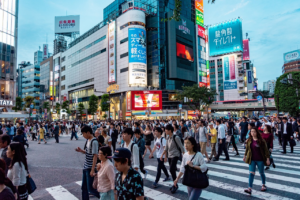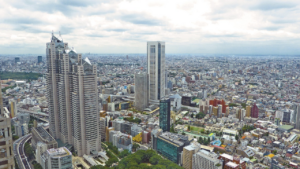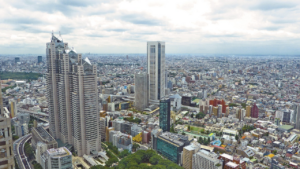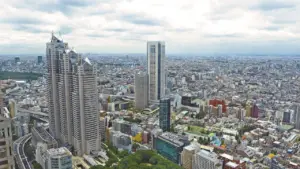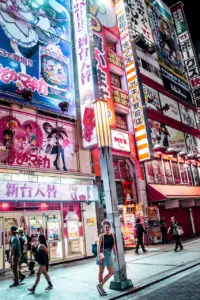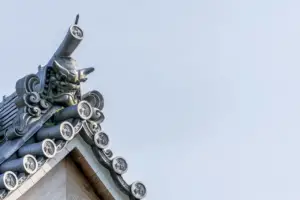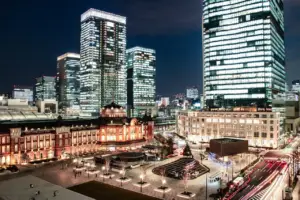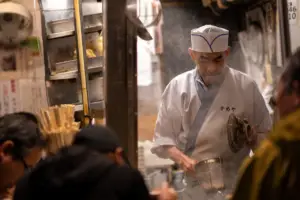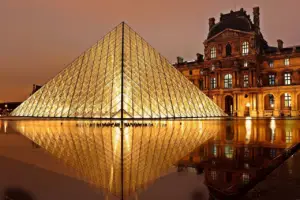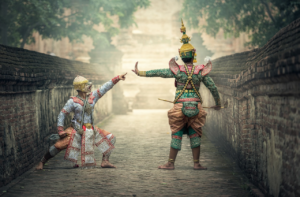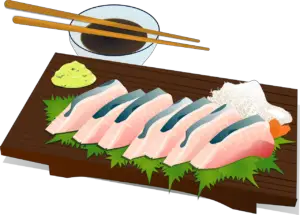Tokyo, the bustling capital city of Japan, is renowned for its modernity and technological advancements. However, beyond the glitz and glamour of its high-rise buildings and neon-lit streets, Tokyo is also home to a rich and vibrant traditional culture that dates back centuries.
From the elegant art of entertainment by geishas to the ultimate display of strength and discipline in sumo wrestling, Tokyo’s traditional culture offers a glimpse into Japan’s fascinating history and heritage.
Throughout the centuries, Tokyo has been a hub of cultural exchange and innovation, and its traditional culture reflects this diversity. The art of geisha, for instance, originated in Kyoto and was introduced to Tokyo in the 18th century. Similarly, sumo wrestling has its roots in ancient Shinto rituals and has evolved over time to become a highly competitive and popular sport. Meanwhile, tea ceremonies, which emphasize the art of savoring matcha, offer a glimpse into Japanese aesthetics and mindfulness.
In this article, we will explore Tokyo’s traditional culture and delve into the various aspects of geisha, sumo, and tea ceremonies, as well as other traditional practices and crafts that define this vibrant city.
Key Takeaways
- Tokyo has a rich traditional culture that includes geisha, sumo wrestling, and tea ceremonies.
- Geisha are highly skilled performers trained in music, dance, and conversation. They undergo a rigorous training process that includes learning traditional Japanese instruments, dance, tea ceremony, and flower arrangement.
- Sumo wrestling requires immense physical strength, discipline, technique, and strategy. It has unique traditions and rituals, such as the throwing of salt to purify the ring before each match and the wearing of colorful aprons as a symbol of rank.
- Tea ceremonies are a traditional Japanese art form that emphasize simplicity, harmony, and respect. The preparation and serving of matcha, a finely ground powder made from green tea leaves, is an integral part of the tea ceremony and requires precision and attention to detail. The ceremony is designed to bring participants into a state of heightened awareness and appreciation for the present moment.
Geisha: The Elegant Art of Entertainment
The art of geisha entertainment in Tokyo is a traditional and elegant practice that involves highly skilled performers trained in music, dance, and conversation to provide sophisticated entertainment for their clients. Geisha, also known as geiko in the Kyoto dialect, are often mistaken for prostitutes due to their historical association with the pleasure quarters of Japan. However, their role is more akin to that of a hostess, serving as a cultural ambassador for their clients through their knowledge of traditional arts, conversation skills, and graceful demeanor.
Geisha undergo a rigorous training process that begins at a young age, often between the ages of 15 to 18. Their training includes learning traditional Japanese instruments such as the shamisen, dance, tea ceremony, and flower arrangement, as well as becoming proficient in conversation skills.
The art of geisha entertainment has been passed down through generations and has remained a vital part of Japanese culture. Although the number of geisha has decreased over the years, their presence can still be felt in certain areas of Tokyo such as the Asakusa district, where they perform for visitors and locals alike.
Sumo: The Ultimate Display of Strength and Discipline
One notable aspect of sumo, Japan’s traditional wrestling sport, is the immense physical strength and discipline required of its participants. Sumo wrestlers, or rikishi, train extensively in order to maintain their large and powerful physiques. They also adhere to strict diets and daily routines that are meant to promote discipline and mental fortitude.
In addition to physical strength, sumo requires a great deal of technique and strategy. Matches, or bouts, are short but intense, with wrestlers aiming to push their opponents out of a circular ring or force them to touch the ground with any part of their body other than their feet.
The sport’s long history and cultural significance in Japan has led to some unique traditions and rituals, such as the throwing of salt to purify the ring before each match and the wearing of colorful aprons as a symbol of rank.
Overall, sumo is a fascinating display of both physical and mental prowess, and remains an important part of Japan’s cultural heritage.
Tea Ceremonies: The Art of Savoring Matcha
Tea ceremonies are a traditional Japanese art form that dates back to the 9th century. The philosophy behind tea ceremonies is deeply rooted in Zen Buddhism, emphasizing simplicity, harmony, and respect.
The preparation and serving of matcha, a finely ground powder made from green tea leaves, is an integral part of the tea ceremony, and requires precision and attention to detail.
Those interested in experiencing tea ceremonies can find them in traditional tea houses, temples, and cultural centers throughout Japan.
History and Philosophy of Tea Ceremonies
Originating in the 9th century, the Japanese tea ceremony, or chanoyu, is deeply rooted in Japanese culture and is considered a contemplative practice that seeks to cultivate harmony, purity, and tranquility.
The tea ceremony was originally developed by Zen Buddhists as a way to embody the principles of Zen in everyday life. Over time, the ceremony became a way for the ruling class to display their wealth and status, and it evolved into a highly formalized ritual with strict rules of conduct.
The philosophy underlying the tea ceremony emphasizes simplicity, mindfulness, and respect for nature. The ceremony is designed to bring participants into a state of heightened awareness and appreciation for the present moment.
The space where the ceremony takes place is carefully designed to create a sense of harmony and balance, with natural materials such as wood and bamboo used extensively. The tea itself is also chosen for its aesthetic qualities, with the color, aroma, and texture of the tea leaves all carefully considered.
Overall, the tea ceremony is a powerful expression of Japanese culture and values, and it remains an important part of Japanese society today.
Preparation and Serving of Matcha
The preparation and serving of matcha involves a series of precise and deliberate steps that have been refined over centuries of Japanese tea culture.
The first step in the process is to sift the matcha powder through a fine mesh to remove any clumps and ensure a smooth consistency.
The powder is then placed in a bowl, and hot water is added slowly while the mixture is whisked vigorously with a bamboo whisk until it becomes frothy.
The matcha is traditionally served in a small bowl called a chawan, which is held with both hands and presented to the guest with a bow.
The guest then rotates the bowl to drink from the side that is not decorated.
The process of preparing and serving matcha is not only a demonstration of technical skill but also a highly ritualized and spiritual experience that emphasizes mindfulness and respect for the tea and its history.
It is a reflection of the beauty and elegance of Japanese traditional culture.
Where to Experience Tea Ceremonies
In addition to the preparation and serving of matcha, experiencing a tea ceremony is an essential part of understanding Japanese traditional culture. The tea ceremony, or cha-no-yu, is a highly ritualized event that revolves around the preparation and serving of matcha, and is rooted in Zen Buddhism. The ceremony is a chance for participants to achieve a sense of harmony and tranquility through the appreciation of the simple beauty of nature and the attention to detail in the preparation and serving of tea.
One of the best places to experience a tea ceremony is in Kyoto, which is known as the cultural heart of Japan. There are many tea houses and gardens in Kyoto where visitors can witness a traditional tea ceremony and learn about the cultural significance of the practice.
Other popular places to experience a tea ceremony include Tokyo’s Urasenke Tea School and the Hama Rikyu Gardens, where visitors can enjoy a cup of tea while overlooking the beautiful scenery.
Overall, experiencing a tea ceremony is an opportunity to appreciate the beauty of Japanese traditional culture and gain a deeper understanding of the country’s history and values.
Exploring Tokyo’s Traditional Neighborhoods
Tokyo’s traditional neighborhoods offer a glimpse into the city’s rich cultural heritage.
Asakusa, with its old-world charm, is home to the iconic Senso-ji temple and traditional shops selling souvenirs and snacks.
Yanaka’s quaint streets and temples offer a glimpse into the Edo period.
Kagurazaka’s fusion of old and new boasts trendy cafes and traditional Japanese restaurants.
These neighborhoods provide a unique opportunity to experience Tokyo’s traditional culture and architecture amidst the bustling modernity of the city.
Asakusa’s Old-World Charm
Asakusa’s preservation of traditional architecture and customs invites visitors to step back in time and experience the old-world charm of Tokyo. This district, located in the eastern part of the city, is home to some of the city’s oldest temples, such as the famous Sensoji Temple. The area is also known for its bustling market street, Nakamise-dori, which has been selling traditional goods and snacks for centuries.
The architecture in Asakusa reflects the Edo period, with wooden structures and tiled roofs adding to the area’s historical feel. One of the main attractions of Asakusa is the opportunity to witness traditional Japanese culture through activities such as tea ceremonies and geisha performances. Visitors can also see sumo wrestlers at the nearby Ryogoku Kokugikan Stadium, where sumo tournaments are held several times a year.
Asakusa’s old-world charm is a stark contrast to the modern skyscrapers and high-tech gadgets that Tokyo is known for, making it a must-visit destination for those interested in experiencing Japan’s traditional culture.
Yanaka’s Quaint Streets and Temples
Yanaka’s charming streets and well-preserved temples offer a glimpse into Japan’s rich cultural heritage. This neighborhood located in Tokyo’s Taito ward is known for its traditional atmosphere, with its narrow alleys and wooden buildings, making it a popular destination for tourists seeking a taste of old Japan. Yanaka is also home to several temples, including the Tennoji Temple, the Nezu Shrine, and the Yanaka Cemetery. These structures have been well-maintained over the years, and their architecture remains authentic and distinctively Japanese.
One of the highlights of Yanaka is the Yanaka Ginza shopping street, which offers traditional Japanese goods like sweets, souvenirs, and crafts. The street is lined with small shops that have been passed down from generation to generation, and it has become a popular spot for locals and tourists alike. The area is also known for its street food, such as grilled octopus and sweet potato cakes. Yanaka’s preservation of traditional Japanese culture has made it a unique destination in Tokyo, and it continues to be a popular spot for cultural exploration and appreciation.
| Yanaka’s Temples | Yanaka’s Streets | |||
|---|---|---|---|---|
| Tennoji Temple | Yanaka Ginza shopping street | |||
| Nezu Shrine | Narrow alleys | |||
| Yanaka Cemetery | Wooden buildings | Nippori Fabric Town | Traditional craft shops |
Kagurazaka’s Fusion of Old and New
Kagurazaka, a district in central Tokyo, is known for its fusion of old and new Japan. This area was once known for its geisha houses and traditional Japanese restaurants. Today, it is a vibrant neighborhood that blends the old with the new.
Visitors can enjoy traditional Japanese cuisine, modern cafes, and trendy boutiques. The area is also home to a number of traditional Japanese festivals and cultural events throughout the year. To fully appreciate Kagurazaka’s fusion of old and new, visitors can explore the area’s many attractions.
Some of the top sights to see include the Kagurazaka Slope, a picturesque street lined with traditional Japanese houses and shops. Visitors can also check out the Kagurazaka Awa Odori, a traditional dance festival that takes place every summer. Additionally, the area is home to a number of art galleries and museums, including the Kuroda Memorial Hall and the Bunkamura Museum of Art.
Overall, Kagurazaka is a must-see destination for anyone interested in experiencing the unique blend of traditional and modern Japanese culture.
Traditional Japanese Crafts and Art
Japanese traditional crafts and art have been passed down for generations and continue to be appreciated and practiced in various parts of Tokyo. These crafts and art forms are not just objects of aesthetic pleasure, but also possess significant cultural and historical significance.
One such art form is the intricate craft of Kabuki, which involves the use of elaborate costumes, makeup, and gestures to depict stories from Japanese folklore and history. The Kabuki-za Theatre in Ginza showcases some of the best Kabuki performances in Tokyo, attracting both locals and tourists.
Another traditional art form that is still practiced in Tokyo is the art of Ikebana, which involves the arrangement of flowers in a unique and aesthetically pleasing way. Ikebana is not just a decorative art form but is also a spiritual practice that requires an understanding of Japanese aesthetics, culture, and philosophy. The Sogetsu School of Ikebana in Akasaka is a popular destination for those interested in learning the art of Ikebana.
In addition to these traditional art forms, Tokyo also has a thriving contemporary art scene, with galleries and museums showcasing works of both established and upcoming artists.
Visit Traditional Shrines and Temples
Exploring the historic shrines and temples of Tokyo offers a glimpse into the rich spiritual and religious traditions that have shaped Japan’s history and culture.
Tokyo is home to numerous shrines and temples that date back to the Edo period, including the famous Sensoji Temple in Asakusa, which was founded in the 7th century. Visitors to this temple can explore the intricate architecture, including the iconic Kaminarimon gate and the five-story pagoda, which offer fascinating insights into the spiritual beliefs of the Japanese people.
In addition to Sensoji Temple, Tokyo is home to numerous other sacred sites, including Meiji Shrine, which was dedicated to the deified spirits of Emperor Meiji and his wife, Empress Shoken. This shrine is situated in a vast forested area in Shibuya and offers visitors a serene and peaceful atmosphere.
Other notable temples include Zojoji Temple, which is the main temple of the Jodo sect of Japanese Buddhism, and Shinjuku Gyoen National Garden, which features a stunning mix of traditional Japanese gardens and Western-style landscaping.
Overall, visiting these historic sites is a must for anyone interested in experiencing Tokyo’s rich cultural heritage firsthand.
Sampling Traditional Japanese Cuisine
Indulging in authentic Japanese dishes is a delightful way to immerse oneself in the culinary traditions of the country. Tokyo offers a wide range of traditional Japanese cuisine that one can try in various restaurants, food stalls, and markets. From sushi and sashimi to ramen and tempura, the city is a food lover’s paradise. One can also try some unique dishes such as okonomiyaki (savory pancakes), takoyaki (octopus balls), and yakitori (grilled chicken skewers).
To give an idea of the diversity of Japanese cuisine, the following table shows some popular dishes and their main ingredients:
| Dish | Main Ingredients |
|---|---|
| Sushi | Vinegared rice, raw fish/seafood |
| Sashimi | Raw fish/seafood |
| Ramen | Wheat noodles, meat/vegetable broth, meat/vegetables |
| Tempura | Seafood/vegetables, batter, deep-fried |
| Okonomiyaki | Flour, eggs, cabbage, meat/seafood, sauce |
| Takoyaki | Wheat flour, eggs, diced octopus, green onions, sauce |
| Yakitori | Chicken skewers, soy sauce, salt, pepper |
Trying these dishes not only satisfies one’s taste buds but also provides an opportunity to learn about Japanese culture and customs. Japanese cuisine emphasizes the use of fresh, seasonal ingredients, and the careful preparation of food. It also reflects the country’s historical and geographical influences, as well as its unique aesthetic sense. Overall, sampling traditional Japanese cuisine is an essential part of experiencing Tokyo’s traditional culture.
Shopping for Traditional Japanese Souvenirs
Acquiring customary Japanese souvenirs is a significant aspect of experiencing the unique traditions and aesthetics of the country. Japan is known for its intricate and artistic handicrafts, such as pottery, textiles, and lacquerware.
Tourists can find various traditional Japanese souvenirs in Tokyo’s specialty stores and markets. For instance, Asakusa’s Nakamise Shopping Street is famous for its traditional Japanese souvenirs, such as fans, kimonos, and wooden dolls. In Ginza, tourists can purchase high-end traditional Japanese pottery, tea sets, and sake cups. Additionally, traditional Japanese sweets, such as mochi and wagashi, make excellent souvenirs to take back home.
Apart from traditional handicrafts and sweets, tourists can also purchase souvenirs associated with Japan’s traditional culture. For instance, visitors can buy items related to geisha culture, such as hair accessories, fans, and kanzashi (ornamental hairpins). Sumo-related souvenirs, such as sumo dolls and T-shirts, are popular among sports enthusiasts. For those interested in tea ceremonies, they can purchase tea sets, tea bowls, and tea caddies.
These souvenirs not only serve as reminders of one’s visit to Japan but also promote the country’s traditional culture and values.
Frequently Asked Questions
What is the history of geisha in Tokyo?
The history of geisha in Tokyo dates back to the 18th century. Originally, geisha were entertainers who performed for both men and women at banquets and parties. They were skilled in traditional arts such as dance, music, and poetry.
During the Edo period, many geisha were associated with the pleasure quarters, where they entertained clients in teahouses and brothels. Geisha were highly respected for their artistry and refinement, and were considered to be the epitome of Japanese beauty and culture.
Today, geisha continue to be an important part of Tokyo’s traditional culture, and can be found in designated geisha districts such as Asakusa and Kagurazaka. While their numbers have dwindled over the years, geisha remain a symbol of elegance and sophistication in Japanese society.
How does the training process for sumo wrestlers differ from other sports?
The training process for sumo wrestlers differs significantly from other sports. Sumo requires a unique combination of raw power, agility, and technique. Training usually begins at a young age, with aspiring sumo wrestlers entering a stable to live, train, and compete alongside other wrestlers.
The daily routine of a sumo wrestler typically involves rigorous exercises and a strict diet. Wrestlers undergo repeated bouts of sparring with other wrestlers and are trained in various techniques. The objective of sumo training is to develop the physical and mental strength necessary to win matches.
In addition to physical training, sumo wrestlers also learn about the cultural aspects of the sport, such as the history, customs, and etiquette associated with sumo. Overall, the training process for sumo wrestlers is unique and highly specialized, emphasizing both physical and mental development.
What is the significance of the different tea utensils used in a tea ceremony?
The significance of the different tea utensils used in a tea ceremony can be traced back to the origins of the ceremony itself. Each utensil has a specific purpose and meaning, and is carefully chosen to create an atmosphere of harmony and tranquility.
The most important utensil is the tea bowl, or chawan, which represents the heart of the ceremony and is used to serve the tea. Other utensils include the tea scoop, or chashaku, which is used to measure the tea, the tea whisk, or chasen, which is used to mix the tea, and the tea caddy, or natsume, which holds the powdered tea.
Each utensil is chosen for its shape, color, and texture, and is carefully arranged to create a sense of balance and beauty. The use of these utensils is an integral part of the tea ceremony, and reflects the deep appreciation for beauty and simplicity that is at the heart of Japanese culture.
How has Tokyo’s traditional neighborhoods changed over the years?
Over the years, Tokyo’s traditional neighborhoods have undergone significant changes due to modernization and urbanization. The city’s rapid economic growth in the post-World War II period led to the construction of high-rise buildings and the expansion of transportation networks, resulting in the displacement of many traditional neighborhoods.
Moreover, the influx of Western culture and the rise of consumerism have also had a profound impact on Tokyo’s traditional neighborhoods. Many of the old shops and businesses have been replaced by modern ones, and the traditional way of life has been gradually disappearing.
However, efforts have been made in recent years to preserve Tokyo’s traditional neighborhoods, and some areas have been designated as cultural heritage sites. Despite the challenges, Tokyo’s traditional neighborhoods still retain a unique charm and provide a glimpse into the city’s rich history and culture.
What are some lesser-known traditional Japanese crafts and art forms?
There are many lesser-known traditional Japanese crafts and art forms that have been passed down through generations.
One such craft is Yuzen, a technique of dyeing cloth with intricate designs using a paste made from rice flour and rice bran oil.
Another is Kintsugi, the art of repairing broken pottery with lacquer mixed with gold or silver powder, resulting in a piece that is not only functional but also beautiful.
Shakuhachi is a traditional Japanese flute made of bamboo, often used in Zen meditation and classical music.
Additionally, there is Urushi, the art of applying lacquer to various objects, including furniture, jewelry, and boxes.
These traditional crafts and art forms are an essential part of Japan’s cultural heritage and represent the country’s dedication to preserving its unique identity.
Conclusion
In conclusion, Tokyo’s traditional culture is a fascinating and multifaceted aspect of the city that is worth exploring.
From the elegant art of geisha entertainment to the ultimate display of sumo strength and discipline, and the art of savoring matcha in tea ceremonies, visitors can immerse themselves in the rich cultural heritage of Japan.
Exploring traditional neighborhoods, visiting shrines and temples, sampling Japanese cuisine, and shopping for souvenirs are additional ways to experience the traditional culture of Tokyo.
By embracing and celebrating this cultural history, visitors can gain a deeper appreciation of Japan and its people.
It is clear that Tokyo’s traditional culture is a vibrant and integral part of the city’s identity, and a must-see for anyone interested in Japanese history and culture.






















